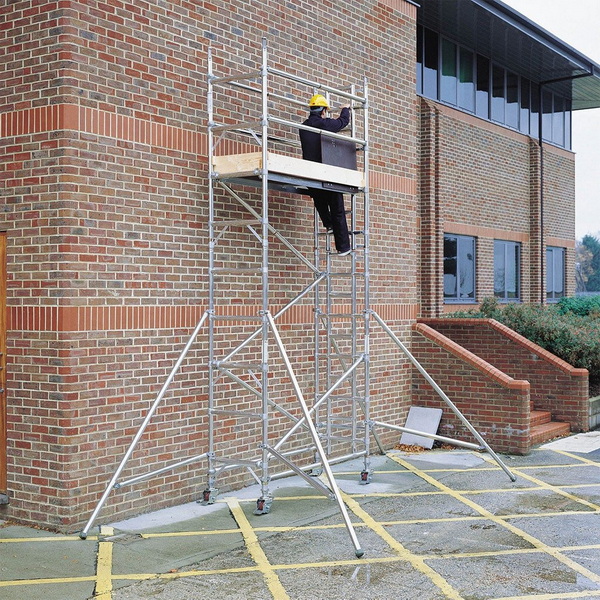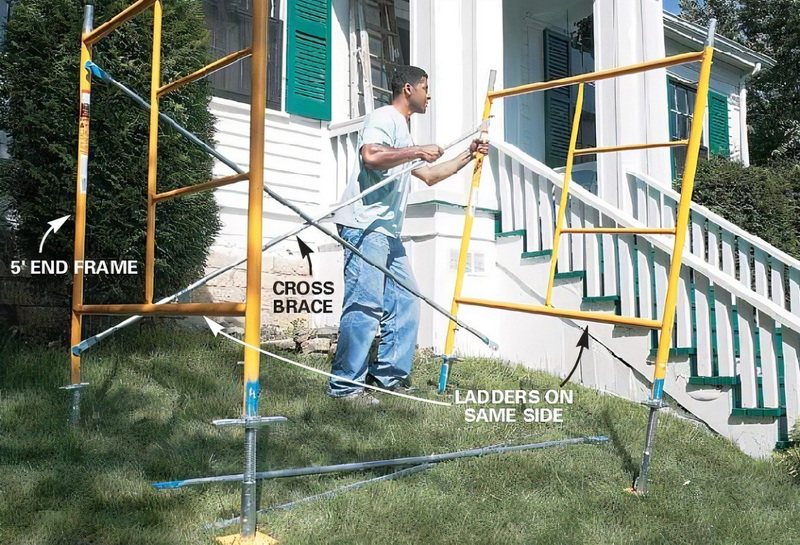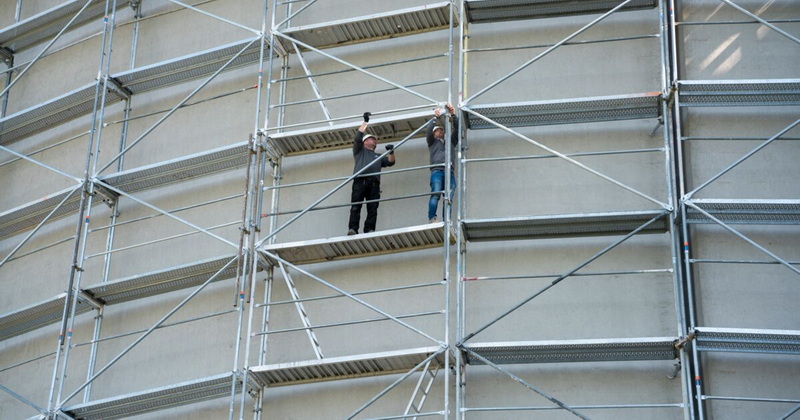Content Menu
● Understanding Scaffold Tower Components
● Safety Precautions and Regulations
>> Mandatory Safety Measures
>> Regulatory Standards
● Tools and Materials Required
● Step-by-Step Assembly Guide
>> 1. Site Preparation
>> 2. Assemble the Base
>> 3. Level the Structure
>> 4. Install First Platform
>> 5. Build Upward
>> 6. Install Guardrails and Toe Boards
>> 7. Attach Stabilizers or Outriggers
>> 8. Final Inspection
● Common Mistakes and Troubleshooting
>> Frequent Errors
>> Troubleshooting Tips
● Maintenance and Inspection
● Case Study: Residential vs. Industrial Assembly
>> Residential Project (Single-Story Painting)
>> Industrial Project (Factory Maintenance)
● Innovations in Scaffold Tower Design
● Best Practices for Scaffold Tower Use
● Conclusion
● FAQ
>> 1. What is the minimum height requiring guardrails on a scaffold tower?
>> 2. Can I assemble a scaffold tower alone?
>> 3. How do I stabilize a scaffold tower outdoors?
>> 4. Are wooden platforms safe for scaffold towers?
>> 5. What training is required for scaffold assembly?
Scaffold towers are essential for safe and efficient work at height in construction, maintenance, and renovation projects. Proper assembly is critical to ensure stability, worker safety, and regulatory compliance. This comprehensive guide provides step-by-step instructions and expert tips to help you assemble a scaffold tower correctly. Whether you're a professional or a DIY enthusiast, this article covers everything you need to know.

Understanding Scaffold Tower Components
A scaffold tower consists of modular parts designed for flexibility and stability. Key components include:
- Vertical frames (standards): Provide structural support.
- Cross braces (horizontal/diagonal): Ensure rigidity.
- Platforms or planks: Create working surfaces.
- Guardrails and toe boards: Prevent falls and dropped objects.
- Base plates or casters: Stabilize the tower or enable mobility.
- Coupling pins and locks: Secure connections between components.
- Stabilizers or outriggers: Provide additional support, especially for taller towers.
- Trapdoor platforms: Allow safe internal access between levels.
Safety Precautions and Regulations
Mandatory Safety Measures
1. Risk Assessment: Identify hazards like uneven ground, overhead power lines, and weather conditions before starting assembly.
2. Competent Personnel: Only trained individuals (e.g., PASMA-certified) should assemble towers.
3. Guardrails and Toe Boards: Required on all platforms above 2 meters (UK/EU) or 10 feet (US).
4. Load Limits: Never exceed the manufacturer's weight capacity.
5. Weather Conditions: Avoid assembly in winds over 31 mph (50 km/h) and during storms or icy weather.
6. Safe Access: Always use internal ladders or trapdoor platforms for ascending and descending.
Regulatory Standards
- UK/EU: EN 1004 compliance, guardrails at 0.5m and 1.0m above platforms.
- US: OSHA 1926 Subpart L mandates a 4:1 height-to-base ratio and guardrails above 10 feet.
- Australia/NZ: AS/NZS 1576 requires wind load calculations and tie-ins for towers exceeding 3x base width.
Tools and Materials Required
- Scaffold frames and braces
- Platforms with trapdoors (for safe access)
- Base plates, casters, or adjustable legs
- Spirit level and measuring tape
- Coupling pins, locking mechanisms, and stabilizers
- PPE: Hard hat, gloves, non-slip footwear, safety harness
- Tagging system for inspection status
- Manufacturer's assembly manual
Step-by-Step Assembly Guide
1. Site Preparation
- Clear debris and ensure the ground is firm and level. Use base plates or adjustable legs on uneven surfaces.
- Check for overhead hazards like power lines, tree branches, or low ceilings.
- Mark the tower footprint and ensure adequate clearance around the work area.
2. Assemble the Base
- Attach casters to vertical frames for mobile towers or base plates for fixed setups. Lock casters before proceeding.
- Position the base frames parallel at the correct distance and connect them with horizontal braces just above the bottom rung.
- Double-check that all locking pins or clamps are fully engaged.
3. Level the Structure
- Use a spirit level to ensure the base is plumb and level. Adjust legs or casters as needed.
- Install a diagonal gooser bar across the base for extra rigidity if provided by the manufacturer.
4. Install First Platform
- Place a temporary platform on the lowest rung to serve as a working area during assembly.
- Add a trapdoor platform at 2 meters for safe internal access.
- Secure each platform with locking hooks or pins.
5. Build Upward
- Stack additional frames on top of the base, aligning them with coupling pins.
- Secure each level with cross braces, alternating diagonal directions for maximum rigidity.
- For towers over 4 meters, install stabilizers or outriggers before adding further height.
- Install intermediate platforms every 2 meters for safe access and rest points.
6. Install Guardrails and Toe Boards
- Attach guardrail posts to the top frames. Secure guardrails 0.5m and 1.0m above the platform.
- Add mid-rails and toe boards to prevent falls and dropped tools.
- Ensure all guardrails and toe boards are locked in place and meet regulatory height requirements.
7. Attach Stabilizers or Outriggers
- Fit stabilizers or outriggers at the base to prevent tipping, especially for towers over 3 times their base width or on uneven ground.
- Ensure all stabilizers are in full contact with the ground and properly locked.
8. Final Inspection
- Check all connections, braces, and platforms for security and proper assembly.
- Inspect the tower for plumb and level.
- Ensure all safety features (guardrails, toe boards, stabilizers) are in place.
- Tag the scaffold as "safe to use" after verification and document the inspection.

Common Mistakes and Troubleshooting
Frequent Errors
- Improper Bracing: Missing diagonal braces cause swaying. Always follow the 4:1 height-to-base rule.
- Overloading Platforms: Distribute weight evenly and avoid stacking materials.
- Ignoring Weather: Dismantle towers during storms or high winds.
- Using Damaged Components: Replace any bent, cracked, or corroded parts immediately.
- Skipping Inspections: Always inspect before each use and after adverse events.
Troubleshooting Tips
- Tower Leans: Recheck base leveling and stabilizer placement.
- Loose Components: Tighten coupling pins and inspect for damage.
- Access Issues: Only use internal ladders and trapdoor platforms for safe ascent and descent.
- Unstable Ground: Use larger base plates or move the tower to a firmer location.
Maintenance and Inspection
- Daily Checks: Verify guardrails, braces, and platform security before each use.
- Weekly Inspections: Required by law in many regions for towers on construction sites.
- After Adverse Events: Inspect after strong winds, impacts, or modifications.
- Documentation: Keep inspection records as required by local regulations.
- Cleaning: Remove mud, paint, or debris from components to prevent slipping and ensure proper assembly.
- Storage: Store components in a dry, secure location to prevent rust and damage.
Case Study: Residential vs. Industrial Assembly
Residential Project (Single-Story Painting)
- Height: 4 meters.
- Components: Aluminum frames, mobile casters, one stabilizer, two platforms.
- Cost: £94.40/week (UK) or $169/week (US).
- Assembly Time: 1–2 hours with two people.
Industrial Project (Factory Maintenance)
- Height: 12 meters.
- Components: Steel frames, fixed base plates, multiple outriggers, intermediate platforms every 2 meters.
- Cost: £300/week (UK) or $840/week (US).
- Assembly Time: 4–6 hours with a trained team.
Innovations in Scaffold Tower Design
1. Modular Systems: Tool-free, color-coded components reduce assembly time by 30%.
2. Smart Sensors: Monitor load, tilt, and wind speed in real time, alerting users to unsafe conditions.
3. Hybrid Materials: Aluminum-GRP composites offer lightweight, non-conductive safety for electrical work.
4. Self-Leveling Bases: Some advanced towers can automatically adjust to minor ground variations, increasing safety and efficiency.
5. Digital Inspection Logs: Mobile apps for documenting inspections and maintenance.
Best Practices for Scaffold Tower Use
- Never move a scaffold tower while someone is on it.
- Do not use boxes, ladders, or other objects on platforms to gain extra height.
- Keep platforms clear of unnecessary tools and materials to prevent tripping.
- Always follow the manufacturer's assembly manual and local regulations.
- Use a tagging system to indicate inspection status (green for safe, red for unsafe).
- Ensure adequate lighting if assembling or using the tower in low-light conditions.
- Dismantle or lower the tower in high winds or storms.
- Train all users in safe assembly, use, and emergency procedures.
Conclusion
Assembling a scaffold tower requires meticulous planning, adherence to safety protocols, and familiarity with regional regulations. By following the step-by-step guide above, using certified components, and conducting regular inspections, you can ensure a stable and secure structure for work at height. Prioritize manufacturer guidelines and never compromise on safety-whether for a residential paint job or an industrial overhaul. Proper assembly, maintenance, and responsible use are the keys to preventing accidents and ensuring efficient, productive work.

FAQ
1. What is the minimum height requiring guardrails on a scaffold tower?
Guardrails are mandatory for platforms over 2 meters (6.5 feet) in the UK/EU and 10 feet (3 meters) in the US.
2. Can I assemble a scaffold tower alone?
No. Always involve at least two people to ensure stability and safety during assembly.
3. How do I stabilize a scaffold tower outdoors?
Use stabilizers or outriggers and tie the tower to a structure if height exceeds 8 meters.
4. Are wooden platforms safe for scaffold towers?
No. Use only manufacturer-approved metal or fiberglass platforms to meet load ratings.
5. What training is required for scaffold assembly?
PASMA certification (UK) or OSHA training (US) is mandatory for towers over 4 meters.






















